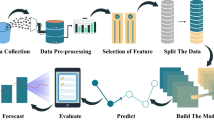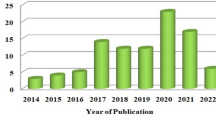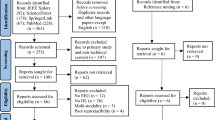Abstract
This paper develops an end-to-end ECG signal classification algorithm based on a novel segmentation strategy and 1D Convolutional Neural Networks (CNN) to aid the classification of ECG signals and alleviate the workload of physicians. The ECG segmentation strategy named R-R-R strategy (i.e., retaining ECG data between the R peaks just before and after the current R peak) is used for segmenting the original ECG data into segments to train and test the 1D CNN models. The novel strategy mimics physicians in scanning ECG to a greater extent, and maximizes the inherent information of ECG segments for diagnosis. The performance of the proposed end to end ECG signal classification algorithm was verified with the ECG signals from 48 records in the MIT-BIH arrhythmia database. When the heartbeat types were divided into the five classes recommended by clinicians, i.e., normal beat, left bundle branch block beat, right bundle branch block beat, premature ventricular contraction, and paced beat, the classification accuracy, the area under the curve (AUC), the sensitivity, and the F1-score achieved by the proposed model were 0.9924, 0.9994, 0.99 and 0.99, respectively. When the heartbeat types were divided into six classes recommended by clinicians, i.e., normal beat, left bundle branch block beat, right bundle branch block beat, premature ventricular contraction, paced beat and other beats, the beat classification accuracy, the AUC, the sensitivity, and the F1-score achieved by the model reached 0.9702, 0.9966, 0.97, and 0.97, respectively. When the heartbeat types were divided into five classes recommended by the Association for Advancement of Medical Instrumentation (AAMI), i.e., normal beat, supraventricular ectopic beat, ventricular ectopic beat, fusion beat, and unknown beat, the beat classification accuracy, the sensitivity, and the F1-score were 0.9745, 0.97, and 0.97, respectively. Experimental results show that the proposed method achieves better performance than the state-of-the-art methods.















Similar content being viewed by others
References
Pourbabaee, B., Roshtkhari, M.J., Khorasani, K.: Deep convolutional neural networks and learning ECG features for screening paroxysmal atrial fibrillation patients. IEEE Trans. Syst. 48(12), 2095–2104 (2017). https://doi.org/10.1109/TSMC.2017.2705582
Zubair, M., Kim, J., Yoon, C.: An automated ECG beat classification system using convolutional neural networks. IEEE ICITCS (2016). https://doi.org/10.1109/ICITCS.2016.7740310
Kiranyaz, S., Ince, T., Gabbouj, M.: Real-time patient-specific ECG classification by 1-D convolutional neural networks. IEEE Trans. Biomed. Eng. 63(3), 664–675 (2016). https://doi.org/10.1109/TBME.2015.2468589
Minami, K., Nakajima, H., Toyoshima, T.: Real-time discrimination of ventricular tachyarrhythmia with Fourier-transform neural network. IEEE Trans. Biomed. Eng. 46(2), 179–185 (1999). https://doi.org/10.1109/10.740880
Javadi, M., Arani, S.A.A.A., Sajedin, A., Ebrahimpour, R.: Classification of ECG arrhythmia by a modular neural network based on mixture of experts and negatively correlated learning. Biomed. Signal Process. Control 8(3), 289–296 (2013). https://doi.org/10.1016/j.bspc.2012.10.005
Özbay, Y., Ceylan, R., Karlik, B.: A fuzzy clustering neural network architecture for classification of ECG arrhythmias. Comput. Biol. Med 36(4), 376–388 (2006). https://doi.org/10.1016/j.compbiomed.2005.01.006
Scholkopf, B., Sung, K.-K., Burges, C.J.C., Girosi, F., Niyogi, P., Poggio, T., Vapnik, V.: Comparing support vector machines with Gaussian kernels to radial basis function classifiers. IEEE Trans. Signal Process. 45(11), 2758–2765 (1997). https://doi.org/10.1109/78.650102
Chang, P.-C., Lin, J.-J., Hsieh, J.-C., Weng, J.: Myocardial infarction classification with multi-lead ECG using hidden Markov models and Gaussian mixture models. Appl. Soft Comput. 12(10), 3165–3175 (2012). https://doi.org/10.1016/j.asoc.2012.06.004
Coast, D.A., Stern, R.M., Cano, G.G., Briller, S.A.: An approach to cardiac arrhythmia analysis using hidden Markov models. IEEE Trans. Biomed. Eng. 37(9), 826–836 (1990). https://doi.org/10.1109/10.58593
Pan, S.-T., Hong, T.-P., Chen, H.-C.: ECG signal analysis by using hidden Markov model, In: 2012 IEEE/ International Conference on Fuzzy Theory and Its Applications (iFUZZY2012) (2012). https://doi.org/10.1109/iFUZZY.2012.6409718
Pyakillya, B., Kazachenko, N., Mikhailovsky, N.: Deep learning for ECG classification, IOP Publishing PhysicsWeb (2017).https://iopscience.iop.org/article/10.1088/1742-6596/913/1/012004/meta
Rahhal, M.M.A., Bazi, Y., AlHichri, H., Alajlan, N., Melgani, F., Yager, R.R.: Deep learning approach for active classification of electrocardiogram signals. Inform. Sci. 345, 340–354 (2016). https://doi.org/10.1016/j.ins.2016.01.082
Meng, H. H., Yue, Z.: Classification of electrocardiogram signals with deep belief networks, 2014 IEEE 17th International Conference on Computational Science and Engineering (2014). https://doi.org/10.1109/CSE.2014.36
Luo, K., Li, J., Wang, Z., Cuschieri, A.: Patient-specific deep architectural model for ECG classification. J. Healthcare Eng. 2017, 1–13 (2017). https://doi.org/10.1155/2017/4108720
Rahhal, M.M.A., Bazi, Y., Zuair, M.A., Othman, E., BenJdira, B.: Convolutional neural networks for electrocardiogram classification. J. Med. Biol. Eng. 38, 1014–1025 (2018). https://doi.org/10.1007/s40846-018-0389-7
Karimian, N., Guo, Z., Tehranipoor, M., Forte, D.: Highly reliable key generation From electrocardiogram (ECG). IEEE Trans. Biomed. Eng. 64(6), 1400–1411 (2017). https://doi.org/10.1109/TBME.2016.2607020
Alvarado, A.S., Lakshminarayan, C., Principe, J.C.: Time-based compression and classification of heartbeats. IEEE Trans. Biomed. Eng. 59(6), 1641–1648 (2012). https://doi.org/10.1109/TBME.2012.2191407
Yasmeen, F., Mallick, M.A., Khan, Y.U.: A review on analysis of electrocardiogram signal (MIT-BIH Arrythmia Database). Int. J. Electron. Electr. Comput. Syst. 6(9), 588–591 (2017)
Moody, G.B., Mark, R.G.: The impact of the MIT-BIH arrhythmia database. IEEE Eng. Med. Biol. Mag. 20(3), 45–50 (2001). https://doi.org/10.1109/51.932724
Apandi, Z. F.M., Ikeura, R., Hayakawa, S.: Arrhythmia Detection Using MIT-BIH Dataset: A Review, 2018 International Conference on Computational Approach in Smart Systems Design and Applications (ICASSDA) (2018).https://doi.org/10.1109/ICASSDA.2018.8477620
Moody, G.B., Mark, R.G.: The MIT-BIH arrhythmia database on CD-ROM and software for use with it. Proceedings Computers in Cardiology (1990). https://doi.org/10.1109/CIC.1990.144205
Chazal, P.D., O’Dwyer, M., Reilly, R.B.: Automatic classification of heartbeats using ECG morphology and heartbeat interval features. IEEE Trans. Biomed. Eng. 51(7), 1196–1206 (2004). https://doi.org/10.1109/TBME.2004.827359
Carrillo-Alarcón, J. C., Morales-Rosales, L. A., Rodr\(\acute{i}\)guez-R\(\acute{a}\)ngel, H., Lobato-B\(\acute{a}\)ez, M., Mu\({\tilde{n}}\)oz, A., Algredo-Badillo, I.: A Metaheuristic Optimization Approach for Parameter Estimation in Arrhythmia Classification from Unbalanced Data, Sensors 2020, 20(11), 3139 (2020). https://doi.org/10.3390/s20113139
M\(\acute{a}\)rquez, D. G., Otero, A., García, C. A., Presedo, J.: A study on the representation of QRS complexes with the optimum number of Hermite functions, Biomed. Signal Process. Control, 22, 11-18 (2015).https://doi.org/10.1016/j.bspc.2015.06.006
Li, C., Zheng, C., Tai, C.: Detection of ECG characteristic points using wavelet transform. IEEE Trans. Biomed. Eng. 42(1), 21–2 (1995). https://doi.org/10.1109/10.362922
Pan, J., Tompkins, W.J.: A real-time QRS detection algorithm. IEEE Trans. Biomed. Eng. BME- 32(3), 230–236 (1985). https://doi.org/10.1109/TBME.1985.325532
Jiang, J., Zhang, H., Pi, D., Dai, C.: A novel multi-module neural network system for imbalanced heartbeats classification. Expert Systems with Applications: X 1, (2019). https://doi.org/10.1016/j.eswax.2019.100003
Sahoo, J. P.: Analysis of ECG signal for Detection of Cardiac Arrhythmias, Department of Electronics and Communication Engineering National Institute Of Technology. Roll No: 209EC117 (2011)
Li, J., Si, Y., Xu, T., Jiang, S.: Deep convolutional neural network based ECG classification system using information fusion and one-hot encoding techniques. Math. Prob. Eng. 2018, 1–10 (2018). https://doi.org/10.1155/2018/7354081
Drummond, C., Holte, R. C.: C4. 5, class imbalance, and cost sensitivity: why under-sampling beats over-sampling, Workshop on learning from imbalanced datasets II, 11, 1-8 (2003)
Yang, T., Yu, L., Jin, Q., Wu, L., He, B.: Localization of origins of premature ventricular contraction by means of convolutional neural network from 12-lead ECG. IEEE Trans. Biomed. Eng. 65(7), 1662–1671 (2018). https://doi.org/10.1109/TBME.2017.2756869
Ding, X., He, Q.: Energy-fluctuated multiscale feature learning with deep convnet for intelligent spindle bearing fault diagnosis. IEEE Trans. Instrumentation Measure. 66(8), 1926–1935 (2017). https://doi.org/10.1109/TIM.2017.2674738
Janssens, O., Slavkovikj, V., Vervisch, B., Stockman, K., Loccufier, M., Verstockt, S., Walle, R.V., Hoecke, S.V.: Convolutional neural network based fault detection for rotating machinery. J. Sound Vib. 377, 331–345 (2016). https://doi.org/10.1016/j.jsv.2016.05.027
Kingma, D. P., Ba, J.: Adam: A method for stochastic optimization, Published as a conference paper at the 3rd International Conference for Learning Representations (2014). arXiv: org/abs/1412.6980
Zhao, Z., Liu, C., Li, Y., Li, Y., Wang, J., Lin, B.-S., Li, J.: Noise rejection for wearable ECGs using modified frequency slice wavelet transform and convolution neural networks. IEEE Access 7, 34060–34067 (2019). https://doi.org/10.1109/ACCESS.2019.2900719
Gorunescu, F.: Data Mining: Concepts, Models and Techniques. Springer, Berlin (2011)
Davis, J., Goadrich, M.: The relationship between Precision-Recall and ROC curves, ICML ’06: Proceedings of the 23rd international conference on Machine learning, 233-240 (2006). https://doi.org/10.1145/1143844.1143874
Ali, A.-R. A., Deserno, T. M.: A Systematic Review of Automated Melanoma Detection in Dermatoscopic Images and its Ground Truth Data, Medical Imaging 2012: Image Perception, Observer Performance, and Technology Assessment, 83181I (2012). https://doi.org/10.1117/12.912389
Li, P., Chan, K. L., Fu, S., Krishnan, S. M.: Kernel Machines for Imbalanced Data Problem in Biomedical Applications. In: Ma Y., Guo G. (eds) Support Vector Machines Applications, Springer, Cham (2014). https://doi.org/10.1007/978-3-319-02300-7_7
Abrishami, H., Campbell, M., Han, C., Czosek, R., Zhou, X.: Semantic ECG Interval Segmentation Using Autoencoders, Proceedings of the International Conference on Bioinformatics & Computational Biology (BIOCOMP). The Steering Committee of The World Congress in Computer Science, Computer Engineering and Applied Computing (WorldComp) (2019)
Acknowledgements
This work was supported in part by the Key Lab of Computer Networks and Information Integration (Southeastern University), Ministry of Education, China (K93-9-2017-03), by the Department of Education Shaanxi Province, China (15JK1673), and by Shaanxi Provincial Natural Science Foundation of China (2016JM8034, 2018GY-135, 2018ZDXM-GY-091, 2020SF377). We gratefully acknowledge the support of NVIDIA Corporation with the donation of the Titan Xp GPU used for this research.
Author information
Authors and Affiliations
Corresponding authors
Ethics declarations
Conflict of interest
The authors declare no conflicts of interest.
Availability of data and material
The ECG data used to support the findings of this study have been deposited in the MIT-BIH repository https://physionet.org/content/mitdb/1.0.0.
Additional information
Publisher's Note
Springer Nature remains neutral with regard to jurisdictional claims in published maps and institutional affiliations.
Rights and permissions
About this article
Cite this article
Hua, X., Han, J., Zhao, C. et al. A novel method for ECG signal classification via one-dimensional convolutional neural network. Multimedia Systems 28, 1387–1399 (2022). https://doi.org/10.1007/s00530-020-00713-1
Received:
Accepted:
Published:
Issue Date:
DOI: https://doi.org/10.1007/s00530-020-00713-1




